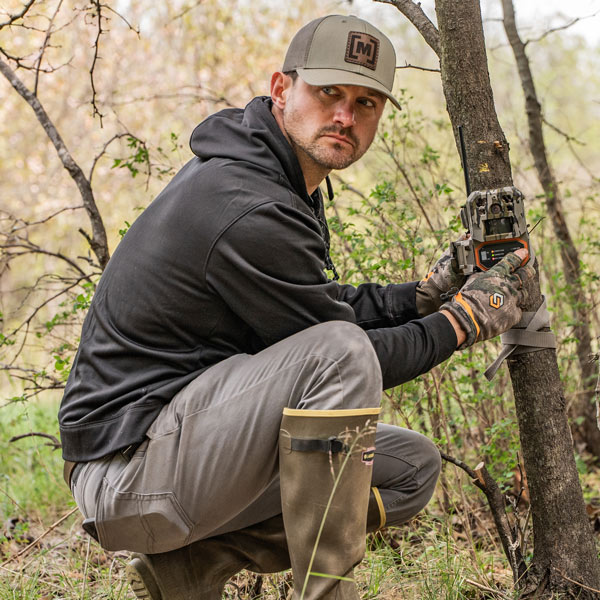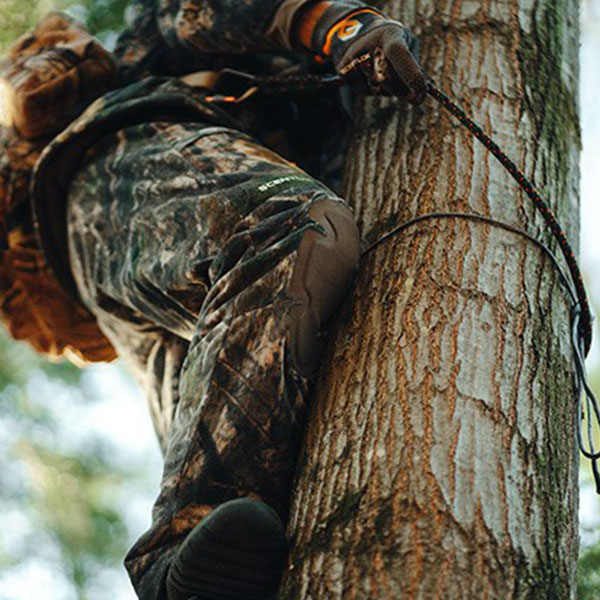In the world of deer hunting, pursuing mature bucks is a challenge that demands skill and patience. Experienced hunters turn to game cameras as their trusty allies to make successful moves on these elusive creatures. I recently had the privilege of tapping into the wisdom of The Game T.V. host Matt Jennings, a seasoned hunter who has mastered the art of using game cameras to locate and target big bucks. Matt shares his insights on the best practices and strategies for game camera usage, helping you make informed decisions that increase your chances of bagging that trophy buck.

Matt doesn't leave anything to chance when it comes to finding those elusive big bucks. He relies on the Moultrie Edge Pro game camera, which captures high-quality images and videos and allows him to maximize his limited time. Matt emphasizes the importance of choosing a reliable camera that suits your specific needs, mainly if your schedule is tight. “I now have two babies at home, and I must choose my time wisely,” says Jennings. The right game camera can be your most valuable tool in the quest for mature bucks.
The game camera isn't just about capturing images and videos; it's about gathering crucial data to help you strategize your hunt effectively. Matt advises focusing on factors like moon phase, time, wind direction, barometric pressure, and daylight patterns. By analyzing this data, you can determine the optimal time to make your move, increasing your chances of a successful hunt.
In the fall, mature bucks actively pursue food sources and mark their territory. Matt suggests that your game cameras be placed near scrapes and food sources. These locations are high-traffic areas for deer, making them prime spots to capture images and videos of big bucks in their natural habitat. One of the key signs of a mature buck's presence is when they transition from being strictly nocturnal to appearing in daylight hours. Matt recommends that when you notice this transition, especially during the early months of October and November, it's the perfect time to make your move. Patience is vital, but when the opportunity presents itself, seize it.

When tracking a particular deer, especially a mature buck, Matt recommends strategically placing your game cameras tailored to that deer's habits. However, it's important to remember that mature bucks are often more active during nighttime. Using multiple cameras positioned in different locations is a smart move to increase your chances of capturing daylight images and videos.
In recent years, Jennings credits cellular camera technology for helping take some of the biggest bucks he has harvested to date. The advent of cell cameras has revolutionized the world of game cameras. Matt emphasizes that cell cameras are a game-changer for real-time data acquisition. “If it weren’t for cell cameras, I wouldn’t have recently shot the biggest buck of my life while in Oklahoma,” He then shared a story of another of his largest bucks, which he had named “John Wayne.” “I was going to hunt a spot on December 10th and was running late; I suggested going to a different location. When daylight was beginning to brighten, my Moultrie app signaled a photo. It was John Wayne, standing at another location. I told my cameraman to pack it up; we were moving. After lunch, we moved to the area where John Wayne was captured on camera, and at 5:30 p.m., I harvested him. We would have never made a move if it weren’t for cell cameras.” says Jennings.
These cameras transmit images, videos, and information directly to your device, allowing you to make swift, well-informed decisions about when and where to hunt. In short, cell cameras can be the edge you need to stay ahead of your elusive target.
The rut is a time of heightened deer activity, making it an opportune moment for hunters. Matt suggests placing trail cameras near food sources to help locate does. As bucks are drawn to does during this season, setting up near their preferred grazing areas will increase your chances of spotting a mature buck in pursuit or when a doe is nearing estrus. “When hunting in the Midwest or near my home in Alabama, there are certain does that are going to in heat,” explains Jennings. He then added by having cameras on a food source where these does routinely spend time, he knows the exact time when bucks began to creep in, allowing him to be two steps ahead of the bucks.

As Jennings has provided invaluable insights into using game cameras effectively for pursuing mature bucks, it is easy to see that with the right camera, a strategic approach, and an understanding of deer behavior, you can make informed moves and increase your chances of a successful hunt. Game cameras are not just tools; they are your eyes in the woods, helping you unlock these majestic creatures' secrets and turn your hunting experience into a thrilling adventure.













